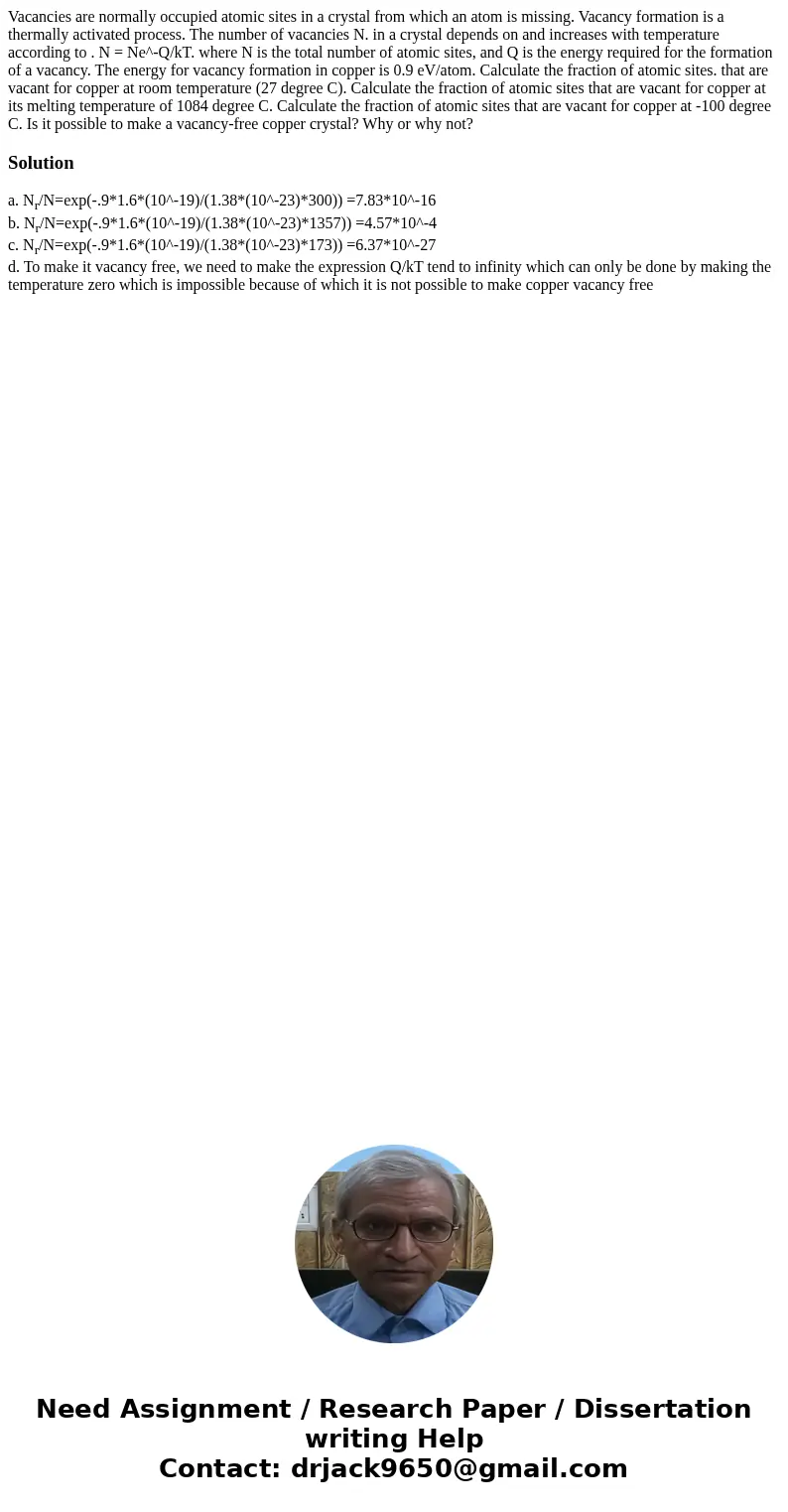Vacancies are normally occupied atomic sites in a crystal fr
Vacancies are normally occupied atomic sites in a crystal from which an atom is missing. Vacancy formation is a thermally activated process. The number of vacancies N. in a crystal depends on and increases with temperature according to . N = Ne^-Q/kT. where N is the total number of atomic sites, and Q is the energy required for the formation of a vacancy. The energy for vacancy formation in copper is 0.9 eV/atom. Calculate the fraction of atomic sites. that are vacant for copper at room temperature (27 degree C). Calculate the fraction of atomic sites that are vacant for copper at its melting temperature of 1084 degree C. Calculate the fraction of atomic sites that are vacant for copper at -100 degree C. Is it possible to make a vacancy-free copper crystal? Why or why not?
Solution
a. Nr/N=exp(-.9*1.6*(10^-19)/(1.38*(10^-23)*300)) =7.83*10^-16
b. Nr/N=exp(-.9*1.6*(10^-19)/(1.38*(10^-23)*1357)) =4.57*10^-4
c. Nr/N=exp(-.9*1.6*(10^-19)/(1.38*(10^-23)*173)) =6.37*10^-27
d. To make it vacancy free, we need to make the expression Q/kT tend to infinity which can only be done by making the temperature zero which is impossible because of which it is not possible to make copper vacancy free

 Homework Sourse
Homework Sourse